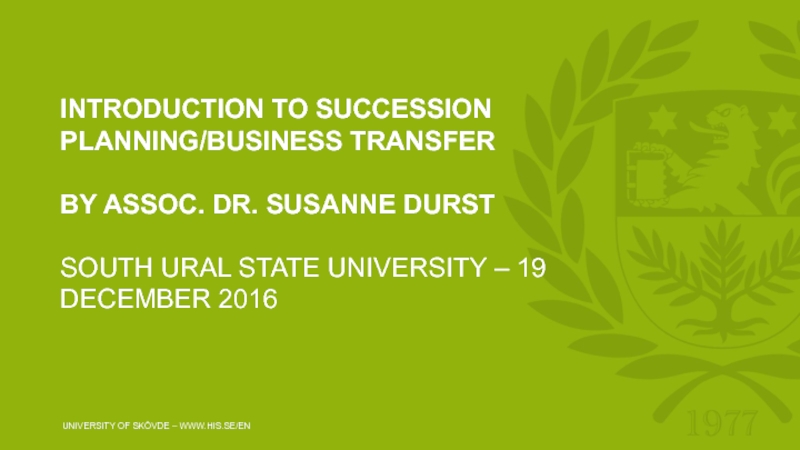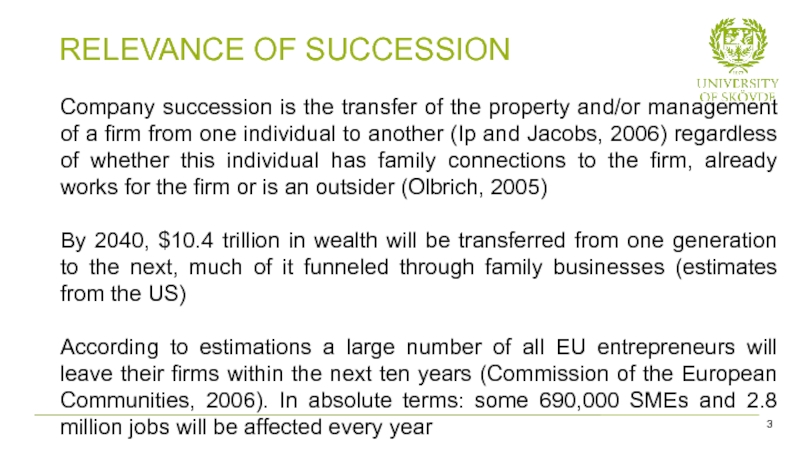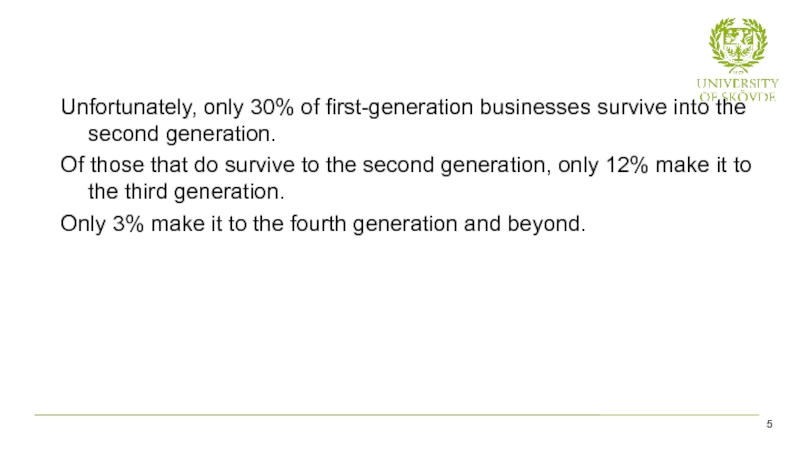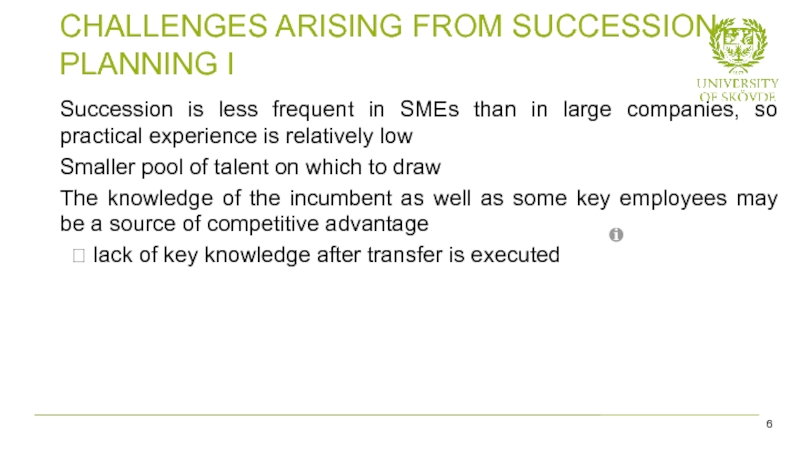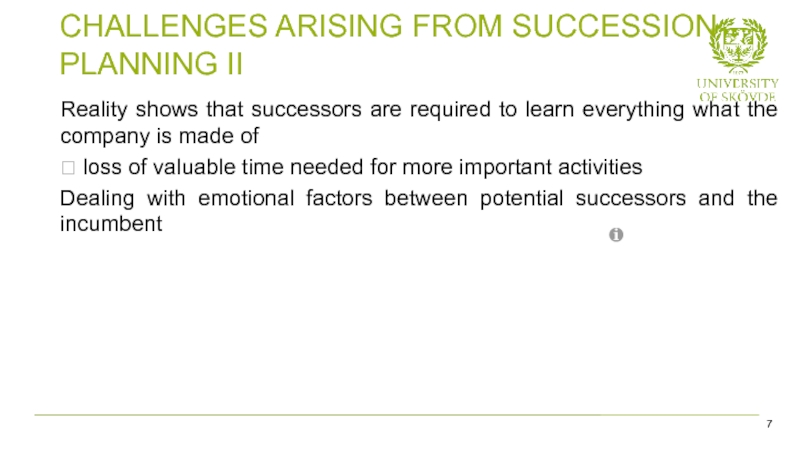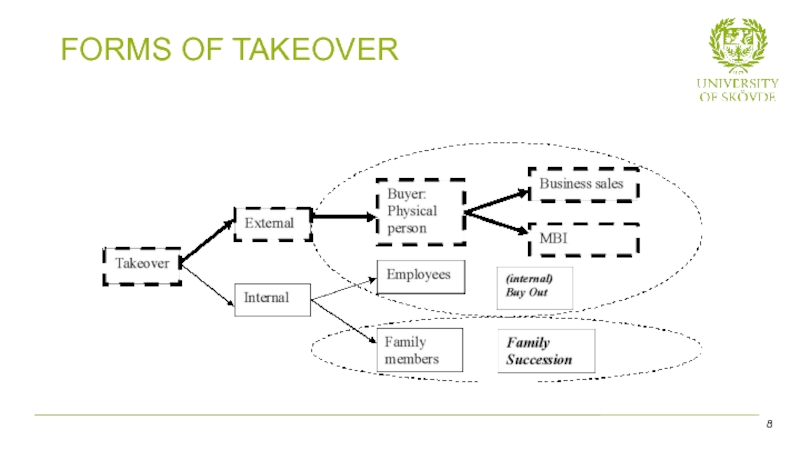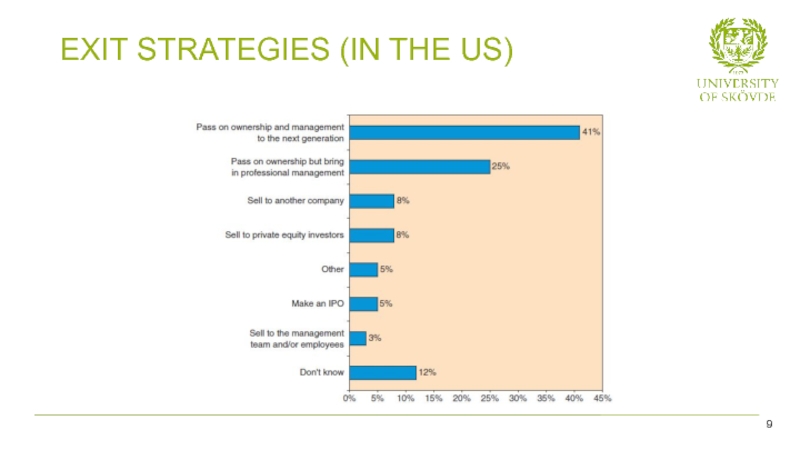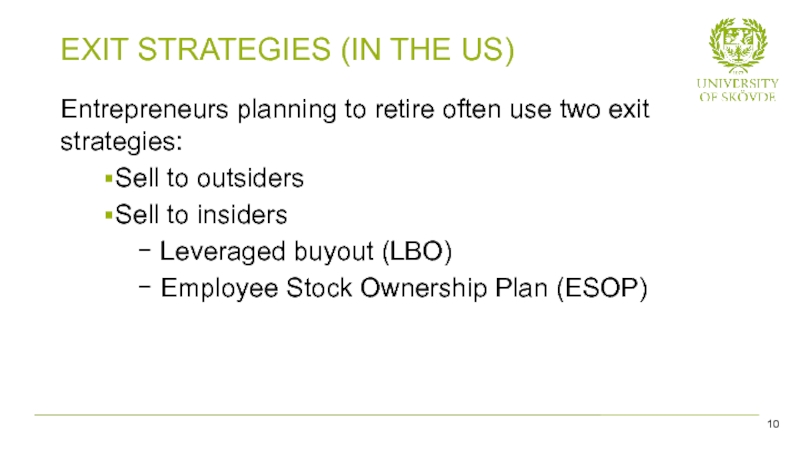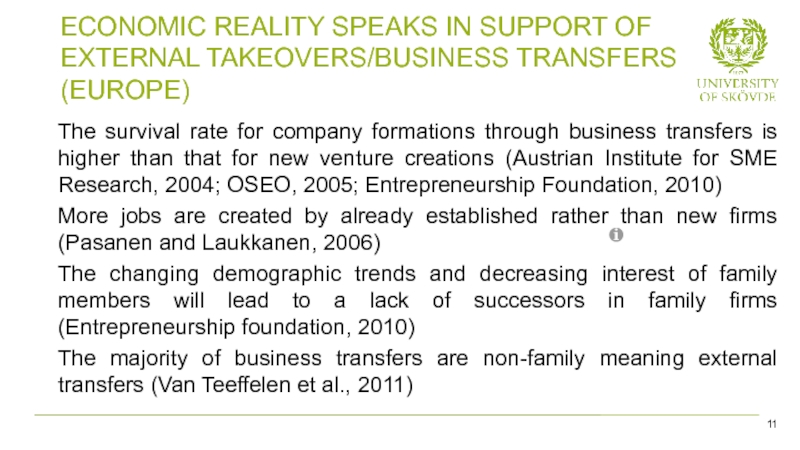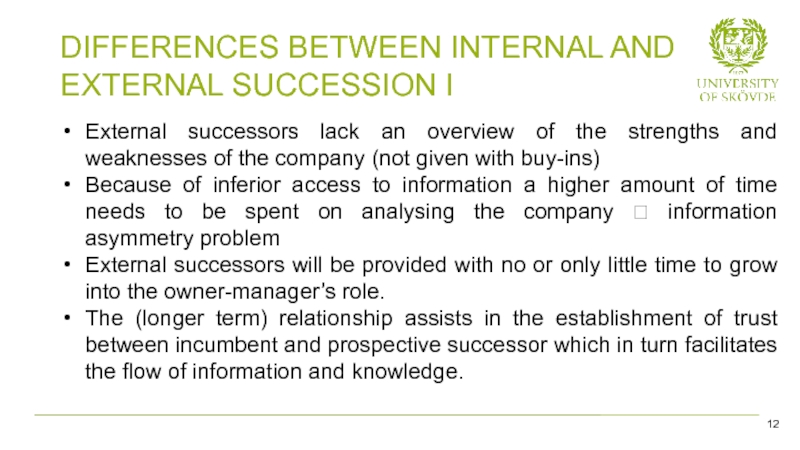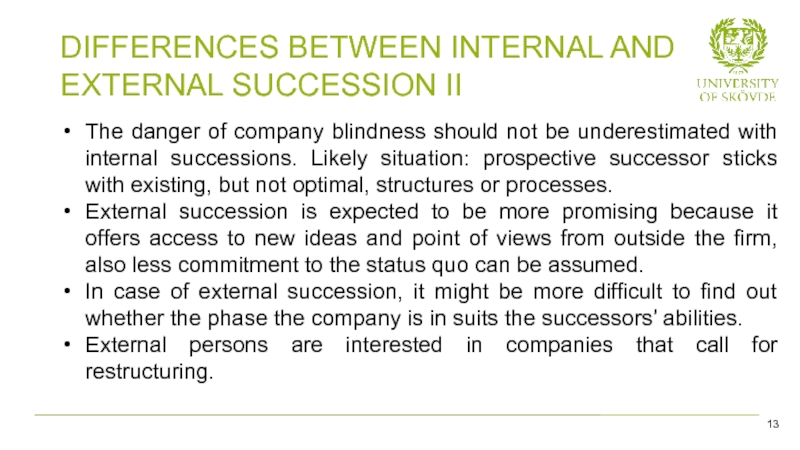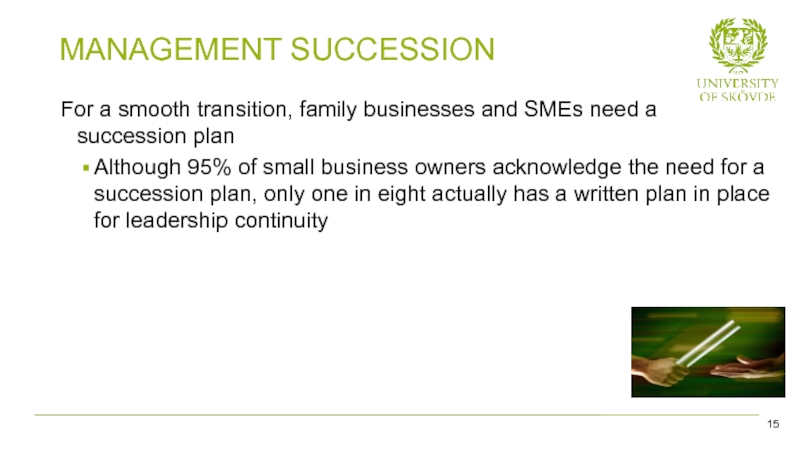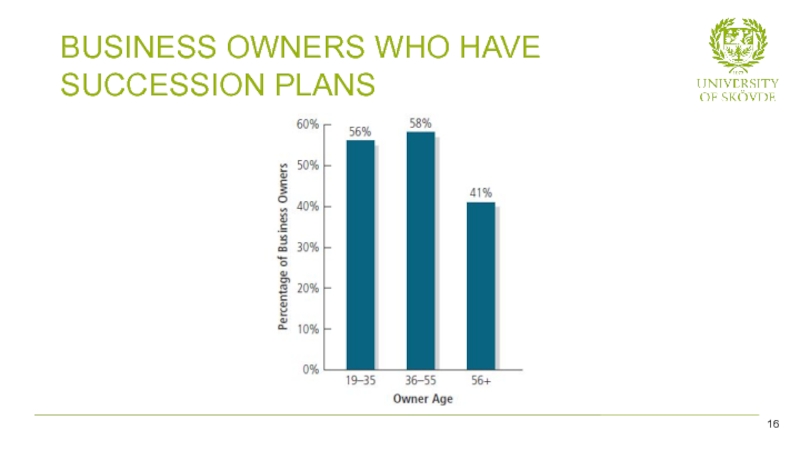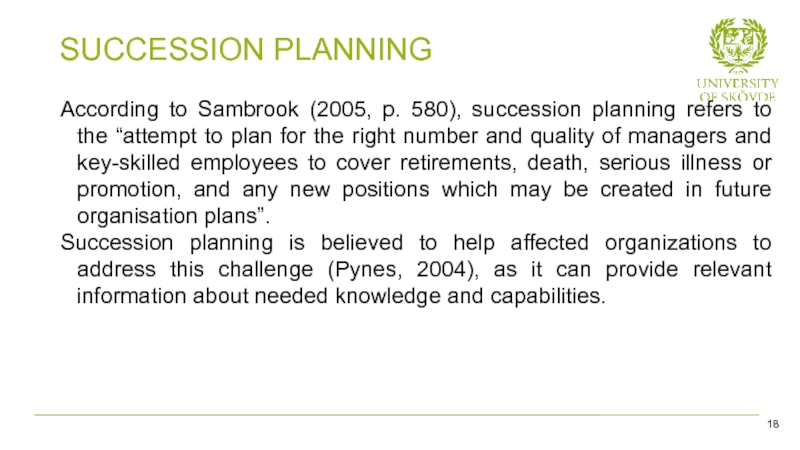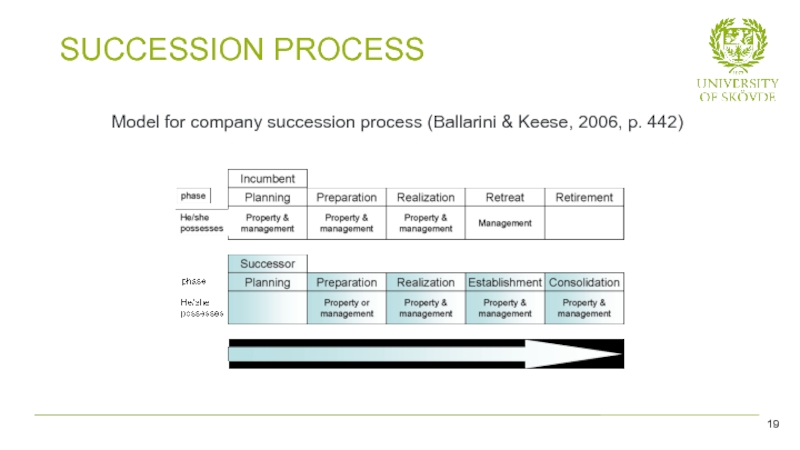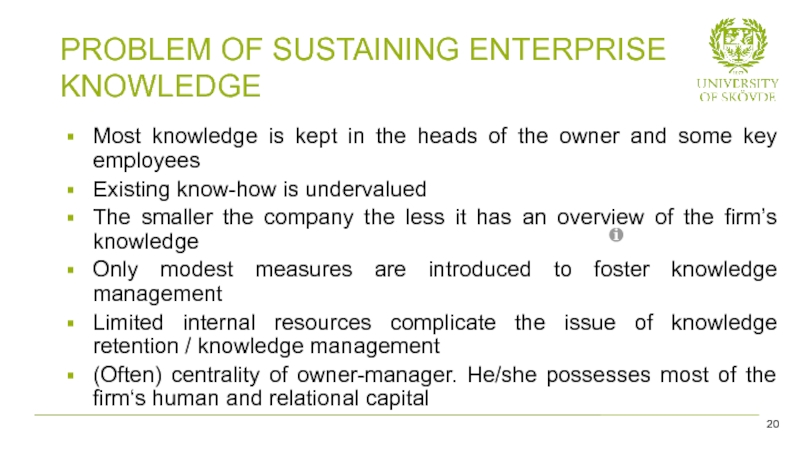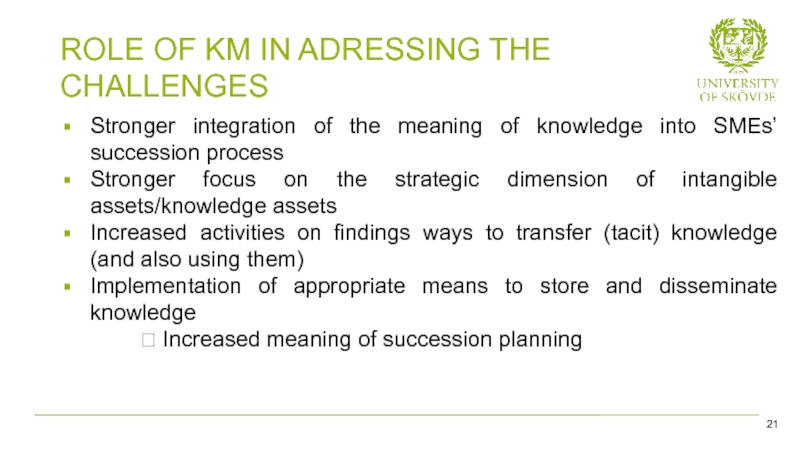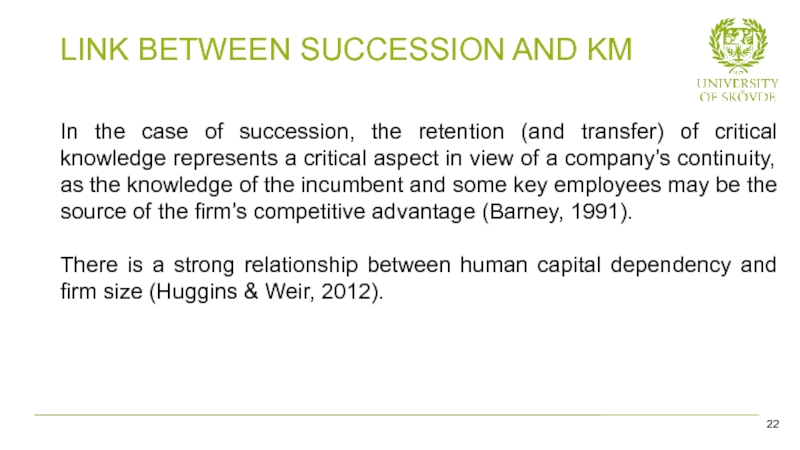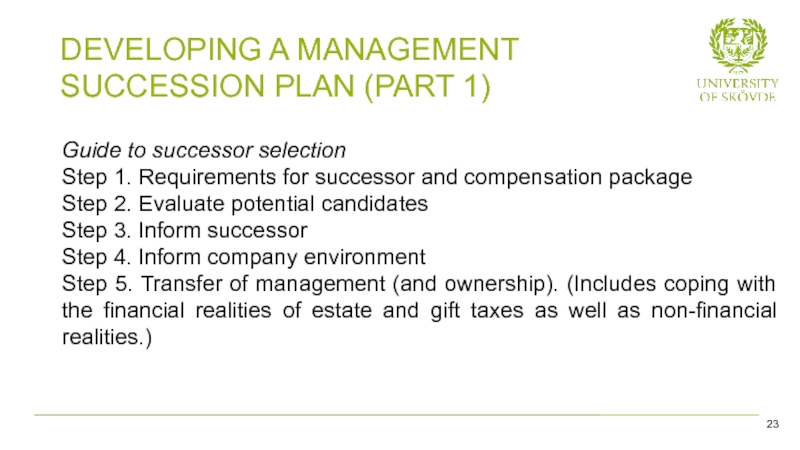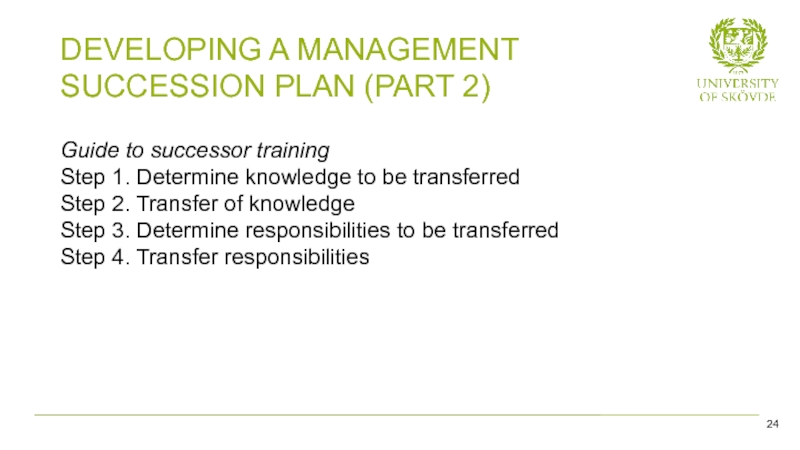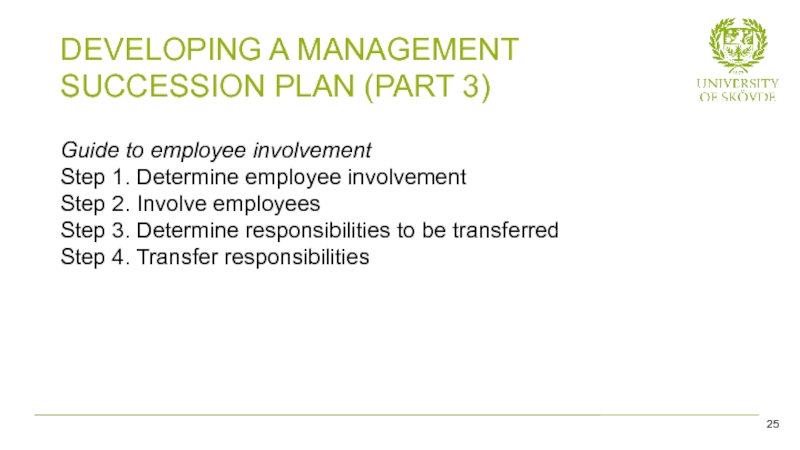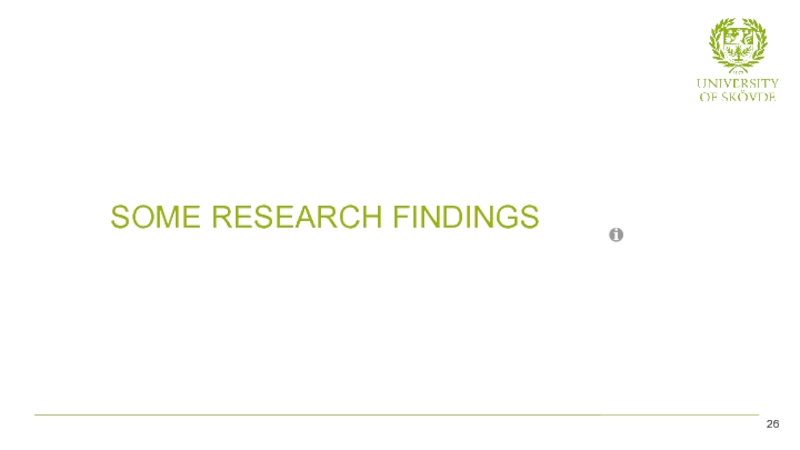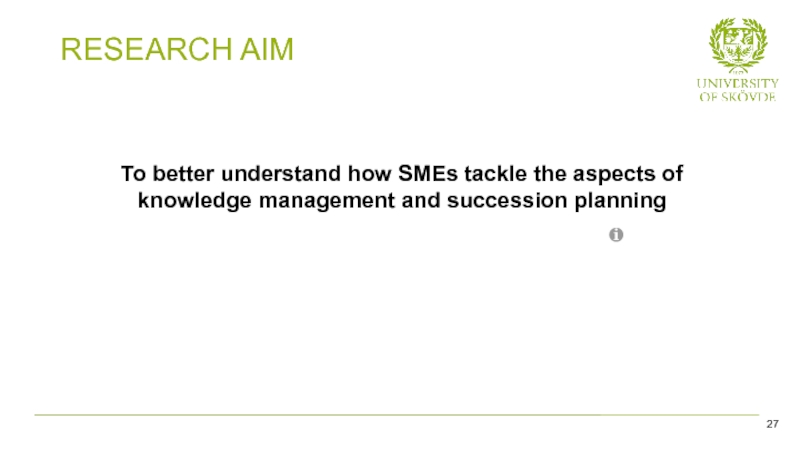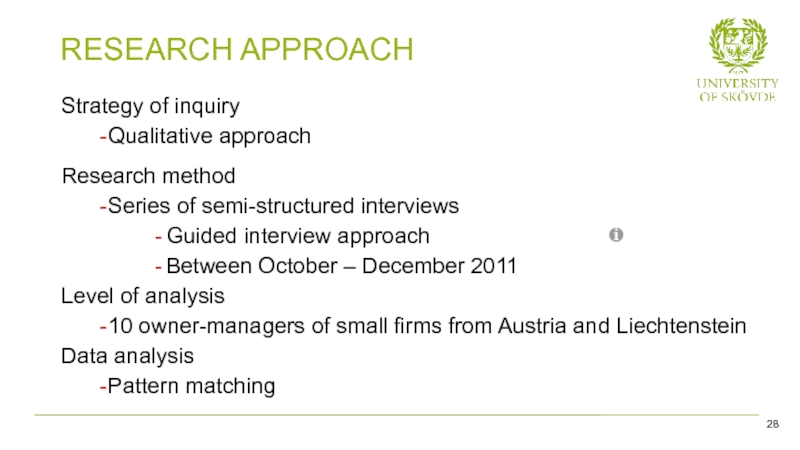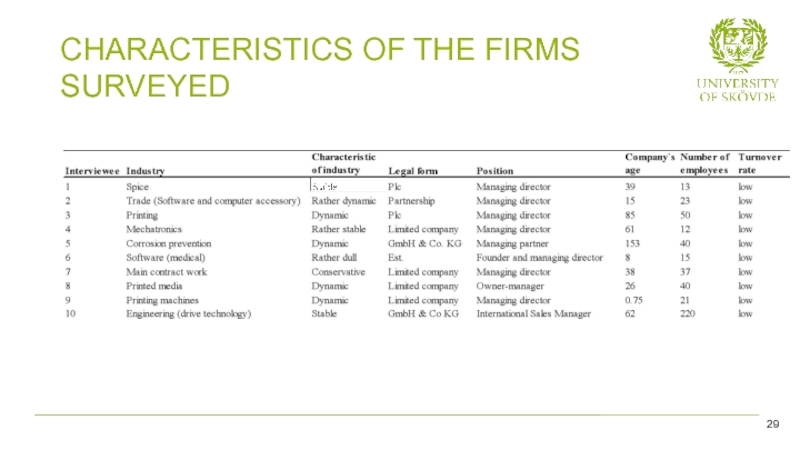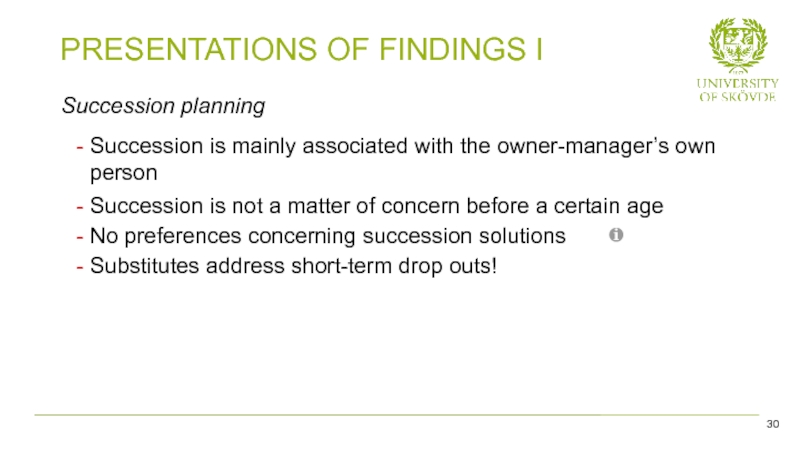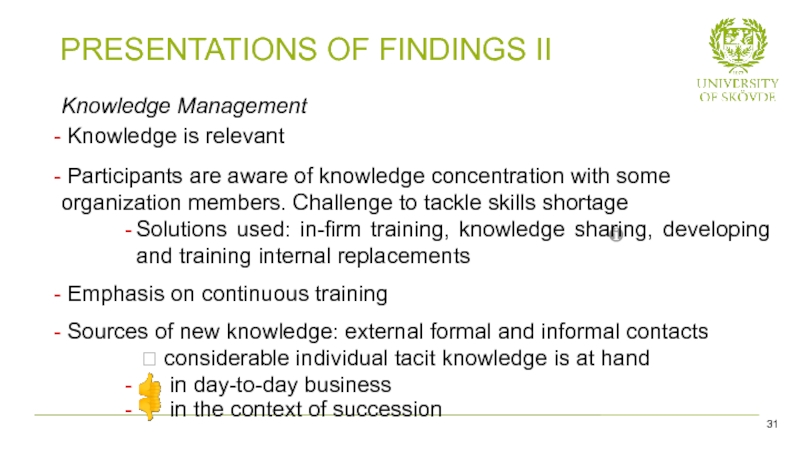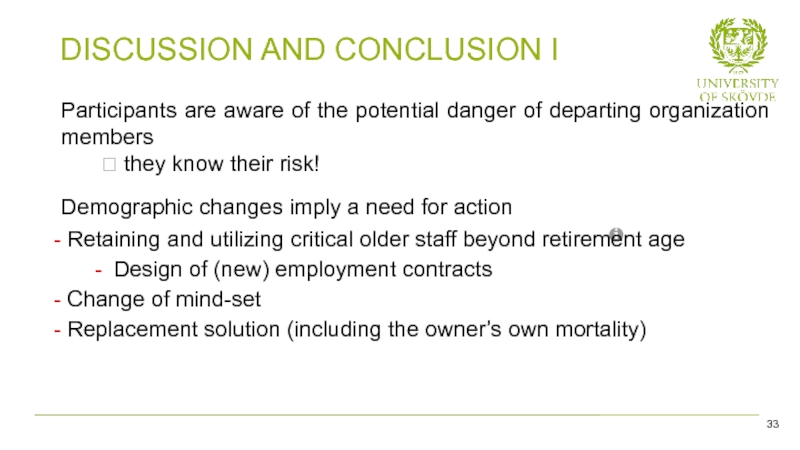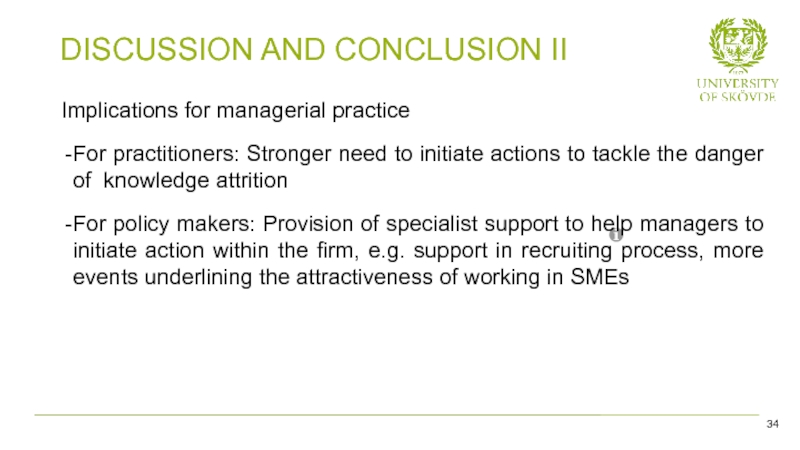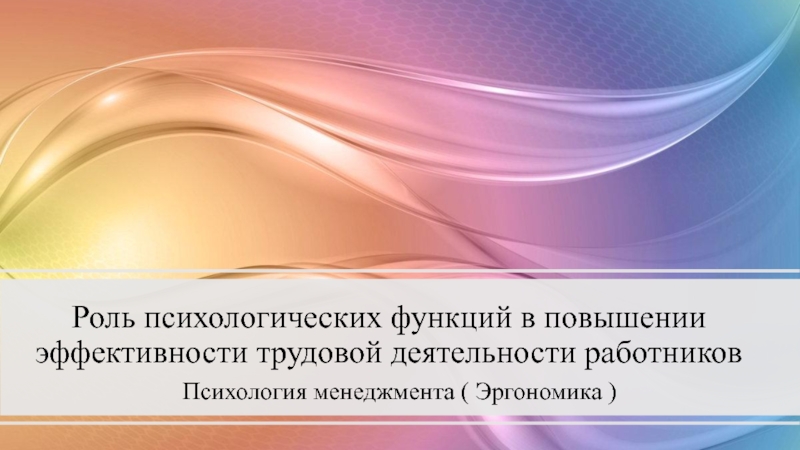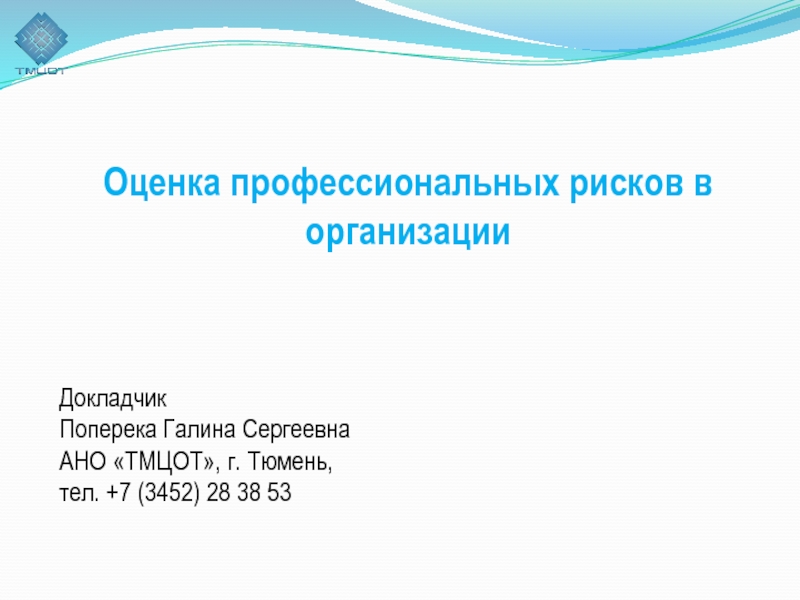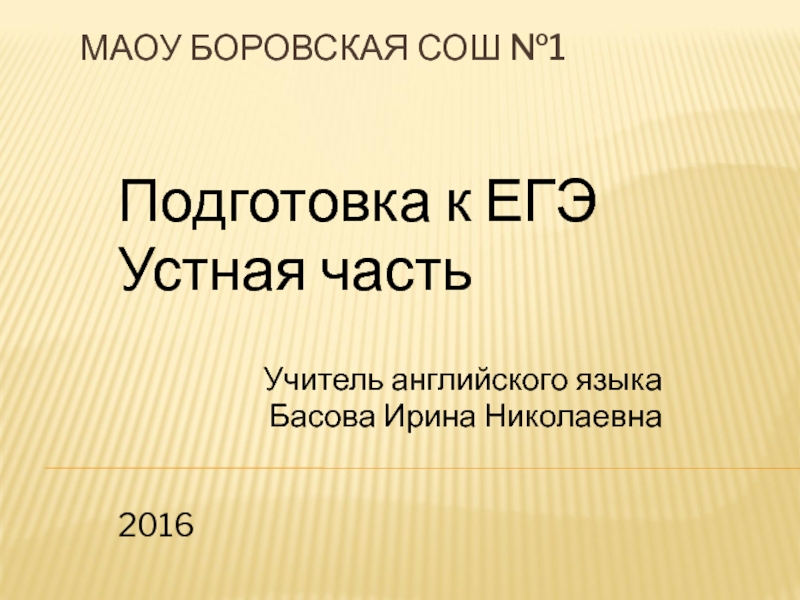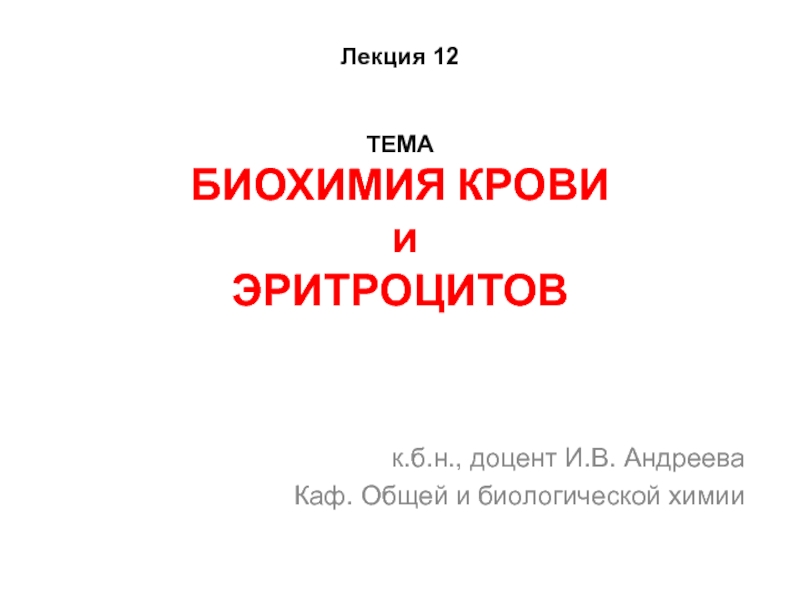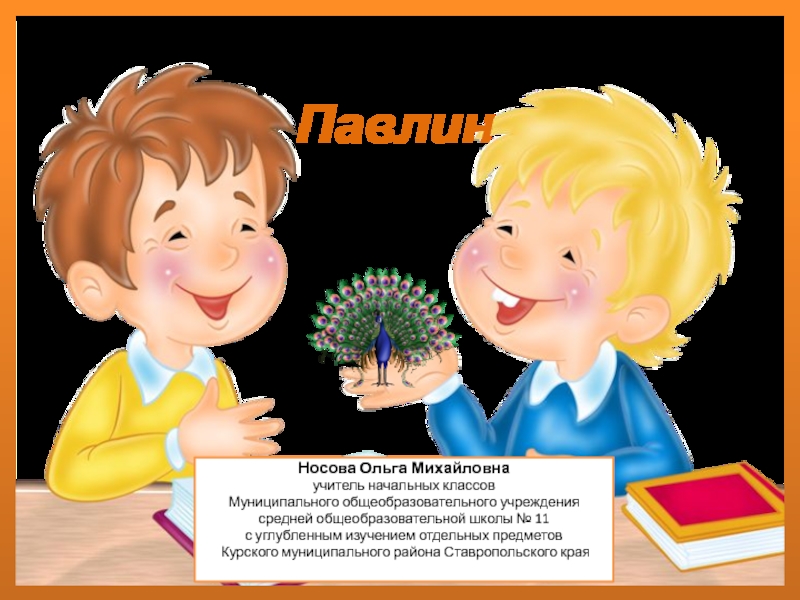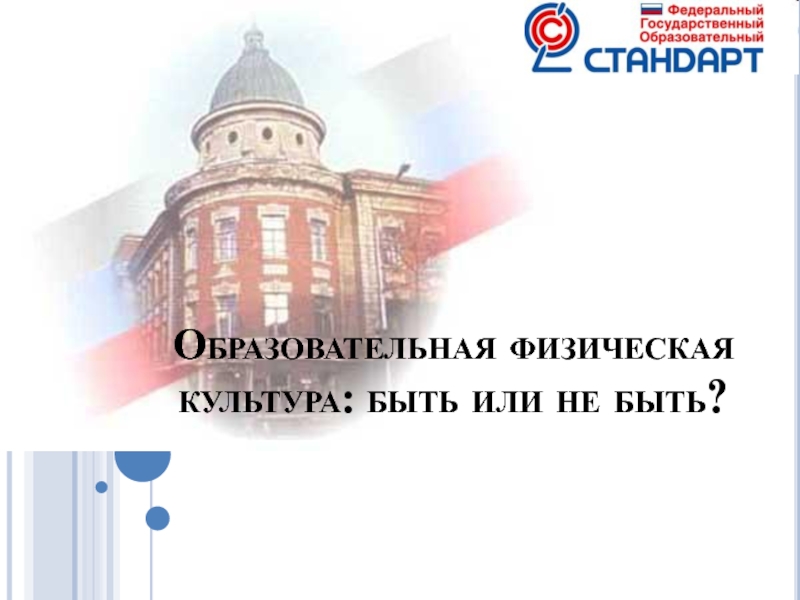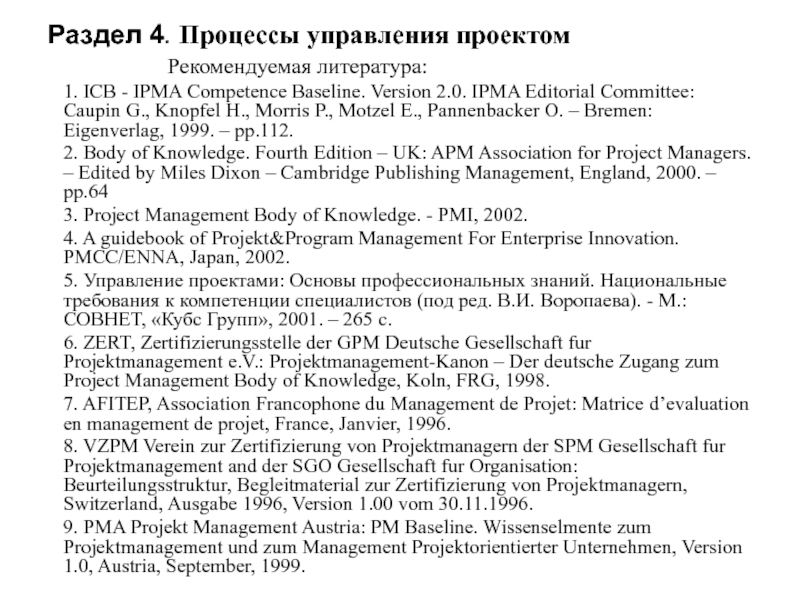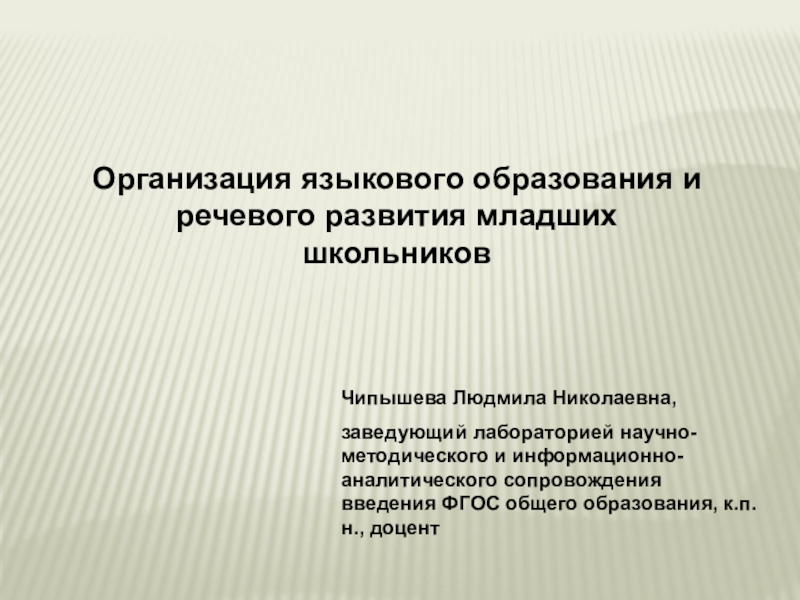Разделы презентаций
- Разное
- Английский язык
- Астрономия
- Алгебра
- Биология
- География
- Геометрия
- Детские презентации
- Информатика
- История
- Литература
- Математика
- Медицина
- Менеджмент
- Музыка
- МХК
- Немецкий язык
- ОБЖ
- Обществознание
- Окружающий мир
- Педагогика
- Русский язык
- Технология
- Физика
- Философия
- Химия
- Шаблоны, картинки для презентаций
- Экология
- Экономика
- Юриспруденция
Introduction TO Succession Planning/Business Transfer By Assoc. Dr. Susanne
Содержание
- 1. Introduction TO Succession Planning/Business Transfer By Assoc. Dr. Susanne
- 2. Company succession is the transfer of the
- 3. Unfortunately, only 30% of first-generation businesses survive
- 4. Succession is less frequent in SMEs than
- 5. Reality shows that successors are required to
- 6. Forms of Takeover8
- 7. Exit Strategies (in the US)22-Plans for Passing on the Family Business9
- 8. Entrepreneurs planning to retire often use two
- 9. The survival rate for company formations through
- 10. External successors lack an overview of the
- 11. The danger of company blindness should not
- 12. For a smooth transition, family businesses and
- 13. Business Owners Who Have Succession Plans16 - 16
- 14. According to Sambrook (2005, p. 580), succession
- 15. Succession Process22-Model for company succession process (Ballarini & Keese, 2006, p. 442)19
- 16. Most knowledge is kept in the heads
- 17. Stronger integration of the meaning of knowledge
- 18. In the case of succession, the retention
- 19. Guide to successor selectionStep 1. Requirements for
- 20. Guide to successor trainingStep 1. Determine knowledge
- 21. Guide to employee involvementStep 1. Determine employee
- 22. Some Research Findings26
- 23. To better understand how SMEs tackle the
- 24. Strategy of inquiryQualitative approachResearch methodSeries of semi-structured
- 25. Characteristics of the firms surveyed29
- 26. Succession planningSuccession is mainly associated with the
- 27. Knowledge Management Knowledge is relevant Participants are
- 28. Participants are aware of the potential danger
- 29. Implications for managerial practiceFor practitioners: Stronger need
- 30. Скачать презентанцию
Слайды и текст этой презентации
Слайд 1Introduction TO Succession Planning/Business Transfer By Assoc. Dr. Susanne DursT South Ural
State University – 19 December 2016
Слайд 2Company succession is the transfer of the property and/or management
of a firm from one individual to another (Ip and
Jacobs, 2006) regardless of whether this individual has family connections to the firm, already works for the firm or is an outsider (Olbrich, 2005)By 2040, $10.4 trillion in wealth will be transferred from one generation to the next, much of it funneled through family businesses (estimates from the US)
According to estimations a large number of all EU entrepreneurs will leave their firms within the next ten years (Commission of the European Communities, 2006). In absolute terms: some 690,000 SMEs and 2.8 million jobs will be affected every year
Relevance of succession
3
Слайд 3Unfortunately, only 30% of first-generation businesses survive into the second
generation.
Of those that do survive to the second generation, only
12% make it to the third generation. Only 3% make it to the fourth generation and beyond.
16 -
5
Слайд 4Succession is less frequent in SMEs than in large companies,
so practical experience is relatively low
Smaller pool of talent on
which to drawThe knowledge of the incumbent as well as some key employees may be a source of competitive advantage
lack of key knowledge after transfer is executed
Challenges arising from succession planning I
6
Слайд 5Reality shows that successors are required to learn everything what
the company is made of
loss of valuable time needed
for more important activitiesDealing with emotional factors between potential successors and the incumbent
Challenges arising from succession planning II
7
Слайд 8Entrepreneurs planning to retire often use two exit strategies:
Sell
to outsiders
Sell to insiders
Leveraged buyout (LBO)
Employee Stock Ownership Plan (ESOP)
Exit
Strategies (in the US)16 -
10
Слайд 9The survival rate for company formations through business transfers is
higher than that for new venture creations (Austrian Institute for
SME Research, 2004; OSEO, 2005; Entrepreneurship Foundation, 2010)More jobs are created by already established rather than new firms (Pasanen and Laukkanen, 2006)
The changing demographic trends and decreasing interest of family members will lead to a lack of successors in family firms (Entrepreneurship foundation, 2010)
The majority of business transfers are non-family meaning external transfers (Van Teeffelen et al., 2011)
Economic reality speaks In Support of external takeovers/business transfers (Europe)
11
Слайд 10External successors lack an overview of the strengths and weaknesses
of the company (not given with buy-ins)
Because of inferior
access to information a higher amount of time needs to be spent on analysing the company information asymmetry problemExternal successors will be provided with no or only little time to grow into the owner-manager’s role.
The (longer term) relationship assists in the establishment of trust between incumbent and prospective successor which in turn facilitates the flow of information and knowledge.
Differences between internal and external succession I
12
Слайд 11The danger of company blindness should not be underestimated with
internal successions. Likely situation: prospective successor sticks with existing, but
not optimal, structures or processes.External succession is expected to be more promising because it offers access to new ideas and point of views from outside the firm, also less commitment to the status quo can be assumed.
In case of external succession, it might be more difficult to find out whether the phase the company is in suits the successors’ abilities.
External persons are interested in companies that call for restructuring.
Differences between internal and external succession II
13
Слайд 12For a smooth transition, family businesses and SMEs need a
succession plan
Although 95% of small business owners acknowledge the need
for a succession plan, only one in eight actually has a written plan in place for leadership continuityManagement Succession
22-
15
Слайд 14According to Sambrook (2005, p. 580), succession planning refers to
the “attempt to plan for the right number and quality
of managers and key-skilled employees to cover retirements, death, serious illness or promotion, and any new positions which may be created in future organisation plans”.Succession planning is believed to help affected organizations to address this challenge (Pynes, 2004), as it can provide relevant information about needed knowledge and capabilities.
Succession Planning
22-
18
Слайд 15Succession Process
22-
Model for company succession process (Ballarini & Keese, 2006,
p. 442)
19
Слайд 16Most knowledge is kept in the heads of the owner
and some key employees
Existing know-how is undervalued
The smaller the company
the less it has an overview of the firm’s knowledgeOnly modest measures are introduced to foster knowledge management
Limited internal resources complicate the issue of knowledge retention / knowledge management
(Often) centrality of owner-manager. He/she possesses most of the firm‘s human and relational capital
Problem of sustaining enterprise knowledge
20
Слайд 17Stronger integration of the meaning of knowledge into SMEs’ succession
process
Stronger focus on the strategic dimension of intangible assets/knowledge assets
Increased activities on findings ways to transfer (tacit) knowledge (and also using them)
Implementation of appropriate means to store and disseminate knowledge
Increased meaning of succession planning
Role of KM in adressing the challenges
21
Слайд 18In the case of succession, the retention (and transfer) of
critical knowledge represents a critical aspect in view of a
company’s continuity, as the knowledge of the incumbent and some key employees may be the source of the firm’s competitive advantage (Barney, 1991).There is a strong relationship between human capital dependency and firm size (Huggins & Weir, 2012).
Link between succession and KM
22
Слайд 19Guide to successor selection
Step 1. Requirements for successor and compensation
package
Step 2. Evaluate potential candidates
Step 3. Inform successor
Step 4. Inform
company environmentStep 5. Transfer of management (and ownership). (Includes coping with the financial realities of estate and gift taxes as well as non-financial realities.)
Developing a Management Succession Plan (Part 1)
16 -
23
Слайд 20Guide to successor training
Step 1. Determine knowledge to be transferred
Step
2. Transfer of knowledge
Step 3. Determine responsibilities to be transferred
Step
4. Transfer responsibilitiesDeveloping a Management Succession Plan (Part 2)
16 -
24
Слайд 21Guide to employee involvement
Step 1. Determine employee involvement
Step 2. Involve
employees
Step 3. Determine responsibilities to be transferred
Step 4. Transfer responsibilities
Developing
a Management Succession Plan (Part 3)16 -
25
Слайд 23To better understand how SMEs tackle the aspects of knowledge
management and succession planning
Research AIM
27
Слайд 24Strategy of inquiry
Qualitative approach
Research method
Series of semi-structured interviews
Guided interview approach
Between
October – December 2011
Level of analysis
10 owner-managers of small
firms from Austria and LiechtensteinData analysis
Pattern matching
Research Approach
28
Слайд 26Succession planning
Succession is mainly associated with the owner-manager’s own person
Succession is not a matter of concern before a certain
ageNo preferences concerning succession solutions
Substitutes address short-term drop outs!
Presentations of Findings I
30
Слайд 27Knowledge Management
Knowledge is relevant
Participants are aware of knowledge
concentration with some organization members. Challenge to tackle skills shortage
Solutions
used: in-firm training, knowledge sharing, developing and training internal replacementsEmphasis on continuous training
Sources of new knowledge: external formal and informal contacts considerable individual tacit knowledge is at hand
in day-to-day business
in the context of succession
Presentations of Findings II
31
Слайд 28Participants are aware of the potential danger of departing organization
members
they know their risk!
Demographic changes imply a need
for action Retaining and utilizing critical older staff beyond retirement age
Design of (new) employment contracts
Change of mind-set
Replacement solution (including the owner’s own mortality)
Discussion and Conclusion I
33
Слайд 29Implications for managerial practice
For practitioners: Stronger need to initiate actions
to tackle the danger of knowledge attrition
For policy makers: Provision
of specialist support to help managers to initiate action within the firm, e.g. support in recruiting process, more events underlining the attractiveness of working in SMEs Discussion and conclusion II
34
